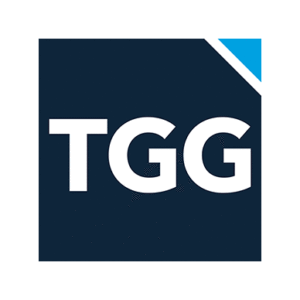Cash Flow Forecaster & Management Company
What is Cash Flow Forecasting?
Cash Flow Forecasting is an integral part of financial management in a company and allows that company to see where their cash flow will be well into the fiscal year. A cash flow forecast or cash flow projection summarizes the receivables and deliverables in a way that allows historical and projected data to be incorporated.
A cash flow forecast is notoriously inaccurate. In fact in a study done in 2014* none of the surveyed organizations categorized their cash flow reporting as “highly accurate”. This is because the numbers you get out are only as good as the numbers you put in and poor resources and lack of communication are listed as the greatest reasons for this lack of reliability of cash flow or financial forecasting.
Learn how an Outsourced Accounting Partner can help you grow
WHY IS CASH FLOW FORECASTING IMPORTANT?
Cash flow forecasting is an essential tool for any business. What are cash flow projections? Cash flow projections help to ensure that the company can meet its financial obligations, such as paying bills and payroll, on time. By accurately predicting future cash flows, a business can make informed decisions about when to invest in new products or services, how much inventory to carry, and other strategic choices.
Forecasting cash flow also helps to manage risk, as it allows the business to anticipate potential problems before they occur and plan accordingly. Without a clear understanding of their future cash flows, businesses run the risk of financial distress and even bankruptcy. By utilizing accurate cash flow forecasting, businesses can ensure that their finances remain stable and can make sound decisions.
WHAT IS CASH FLOW FORECASTING USED FOR?
Understanding a company’s cash flow provides two types of benefits. First, managing cash flow gives management peace of mind, knowing whether the business’s financials are in order to meet any obligations on the horizon.
Second, having a forecasted cash flow sets management up for strong decision making. For example, as the company approaches the end of a pay period, it will need to ensure that there is enough cash on hand to fulfill every paycheck. During times when there is an influx of cash, management can decide whether to accrue it or spend it. Having a cushion of extra money to fall back on helps to ensure that the business is prepared for unanticipated expenses or opportunities, such as modernizing equipment, expanding into new markets, or making a strategic acquisition. The only way to know for sure if the company does in fact have a financial cushion is to have a solid knowledge of the company’s cash flow.
The Difference Between Cash Flow and Revenue
Revenue
A measurement of inflow of money and nothing else.
Cash Flow
A measurement of money that comes into a company in the form of sales as well as other methods and depending on circumstances can be a negative amount.
Forecasting for Inflows & Outflows
When you forecast your cash outflows, you’ll need to include both fixed and variable costs. Some costs will remain largely the same: payroll, inventory, shipping; while others will vary based on market conditions and elements outside your control.
Inflows should be based on historical data and the real numbers for money that will come into the business, not the next great idea and what it can bring in IF only.
How To Measure Your Business’s Cash Flow
The most common types of cash flow measurement are direct and indirect forecasting. Direct forecasting uses actual, real time cash flow in and out of the company’s bank accounts while indirect forecasting relies on accounts receivable and accounts payable balance sheets.
Another way to measure a company’s cash flow is through Work in Progress (WIP) schedules. A WIP schedule tracks the performance of projects and their associated costs, giving management a clear picture of how much money they are spending on each project.
Other ways to measure cash flow include evaluating the company’s current and future income, tracking expenses and investments, analyzing accounts receivables, and examining the company’s debt. Cash flow can be measured in any increments that work for the specific business, such as daily, weekly, monthly, or yearly.
Cash Flow Management Best Practices
- Review your cash flow regularly and closely. Cash is the lifeline of any business so you want to make sure that you won’t run out.
- Use a direct or indirect 13-week cash flow statement. Use a direct method cash flow statement when you’re in a cash crunch because you need to know exactly how much cash is coming in and how much money is going out. Use the indirect method when you’re in a good cash position because that will tell you generally how cash is flowing from a broader picture of the health of the business. If using an indirect method, make sure to review it each month along with your balance sheet and income statement.
- Understand your Cash Conversion Cycle (CCC). The CCC is expressed in days and measures how long it takes for a company to convert its investments in inventory and other resources into cash flows from sales.
- Review your Current Ratio monthly to determine your ability to pay short term obligations. You can calculate your current ratio by taking Total Current Assets divided by Total Current Liabilities. A ratio below 1.5 is a sign of cash flow or liquidity problems that should be addressed immediately.
Setting Up a Plan B
What is your Plan B? In the event that supply chains are disrupted by a major outbreak of a virus or rising seas cause shipping routes to be disrupted there are elements that are out of all of our control. But what you can control is the plans you put in place to compensate. A backup distributor whom you use from time to time who is local could be your saving grace in the event of an earthquake near your regular supplier. Plan B’s also are important for exit and succession planning.
Managing Cash Flow For Startups
For start up companies, setting up a budget and sticking to it is often fundamental to their survival. This includes understanding how to answer the question “What is a cash flow forecast.” Out of the gate, start ups need a way to track spending. This can help the business ensure that you have enough money to pay your bills and invest in necessary resources or equipment.
Additionally, in terms of measuring cash flow for startups it’s beneficial to plan ahead by estimating expected income and expenses. This will help the company avoid any cash flow surprises or money shortages that could threaten its success. Allocating funds for savings can also give the business a financial cushion to draw on if needed in an emergency, or when looking to invest in projects that can further growth.
Advantages Of Cash Flow Forecasting
Cash flow forecasting is an essential tool for businesses to manage their finances, as it helps to plan ahead and anticipate future expenses. By predicting cash inflows and outflows over time, organizations can ensure that they do not run out of money when paying debtors or investing in projects. Knowing what the financial situation will be in the near future allows businesses to know when to scale up operations or prepare for a quieter period.
Failure to have enough cash on hand when tax payments are due can lead to costly IRS penalties. Missed payroll payments not only hurt your worker’s morale, it may also drive up turnover and generate governmental fines for violations of employee pay laws. Failing to pay suppliers or creditors on time due to cash shortages will have ripple effects throughout the business and can lead to expensive litigation.
What Makes For A Good Cash Flow Forecast
A good cash flow forecasting model will always be customized to the business’s unique needs. Always start with a clear goal. Does the company need to pay down debt? Is it expecting to add to its costs, such as making a large purchase or adding staff? Is cash accrual being considered as a means of combating inflation?
The goal and the pace of the business’s working capital cycles will lead to the next logical piece of a good cash flow forecast, the forecasting period. Short periods range from a day to a few weeks and are useful for when a business is focused on meeting day to day expenses. Medium term forecasts, ranging from a couple weeks to a couple quarters, are mostly used for risk management and debt reduction planning. Long term forecasts, those of six months to a year, are employed typically for planning capital projects, setting up annual budgets, and thinking about long term growth.
Your company needs a clear cash flow forecaster for its long term success. Try our cash flow forecaster today to get on the right track, understanding and managing your business.
Why TGG Accounting is the Preferred Cash Flow Management Company
Looking for a reliable cash forecaster? TGG prides itself on our accurate reporting and deep understanding of company financials. Our 20+ years of experience have shown us that the TGG Way™ to cash flow consulting ensures precise reporting and business success that accompanies the security of living by the numbers.
Cash Flow Forecasting Services
TGG, your preferred cash flow management company, recommends utilizing a 13-week cash flow forecasting tool weekly to monitor short term cash sources. Forecasting cash flow will give you a clear picture of the health and safety of your business for the next 13 weeks, 6 months and beyond so you can plan your day-to-day operations, align your goals and navigate cash crunches from changing market conditions. Business cash flow management is essential to the health of any business, small or big. Whether you are looking for cash flow management for startups or a cash flow management company to partner with for a big corporation, TGG has you covered.
READ OUR CASE STUDIES:

Case Study – A Private EMS Company Brings in Outsourced Team to Assist with Significant Growth

Due Diligence Leads to Successful Sale

Case Study – A Media-Buying Agency Reaps the Benefits of Having a Team of Financial Experts

Case Study – How One Ecommerce Company Transformed Their Business and Gained Superior Visibility into Their Financial Performance

Case Studies – Scaling an Online Platform

Case Studies – Preparing for Exit

Case Studies – Start-up Concept Validation

Case Studies – Ready For Growth Phase
FAQ SECTION:
What are the important things to remember when it comes to good cash flow management?
Cash flow is one of the most important aspects of effectively running a business by the numbers. First, consider profitability and understand how much you need to earn in monthly revenue in order to breakeven based on your gross profit margin and operating expenses. Next, understand your Cash Conversion Cycle (CCC). The CCC is expressed in days and measures how long it takes for a company to convert its investments in inventory and other resources into cash flows from sales. A negative number is ideal and indicates you collect from customers faster than you pay your vendors. Businesses can shorten the CCC by making the accounts receivable process as efficient as possible and negotiating longer payment terms with vendors.
What are some early signs of future cash flow problems?
Businesses should review their Current Ratio on a monthly basis. The Current Ratio is a key performance indicator that measures a company’s ability to pay short term obligations and is calculated as Total Current Assets divided by Total Current Liabilities. A Current Ratio of less than 1.5 is an early sign of cash flow problems. TGG recommends utilizing a 13-week cash flow forecasting tool weekly to monitor short term cash sources and uses when the Current Ratio falls below 1.5. The 13-week cash flow forecasting tool allows the business owner to take timely, corrective action in advance of cash shortfalls.
How do you solve cash flows from financing?
Calculating cash flows from financing activities, also referred to as CFF, is a three step process. Tally the cash the company will gain from selling debt or equity. Then, add up any cash payments made toward paying down debt, paying dividends, or repurchasing stock. Finally, subtract the cash out from the cash in to determine what the cash flow from financing is.
What are the steps of cash flow management?
Think of continuous cash flow management as having five basic steps. First, track your cash inflow and outflow. This involves keeping track of all payments made and received, such as from customers or suppliers, as well as any other sources of income or expenses.
Second, analyze how your money moves. Once you have tracked your inflows and outflows, look for patterns and identify any trends or changes in your cash flow. This will also help you identify any potential changes in the cash flow that may require action.
Third, establish reporting. If you plan to monitor your cash flow throughout the life of the business, you will need to be able to compare data over time. The most effective way to track changes in your finances is to create clear and standardized reporting.
Fourth, forecast. Put together some projections for how much money will be coming into and leaving your business in the future. This is essential to planning for expenses, as well as managing unexpected events or shortfalls in income.
Fifth, review and improve your practices. Nothing is static in business, which means your data collection, analysis, reporting, and forecasting will likely need to adjust as your circumstances change. Be on the lookout for how you can tweak the process to have a better understanding of your cash flow.
What are the top cash flow drivers for a business?
The top cash flow drivers are accounts receivable, accounts payable, overhead, inventory, the timing between paying suppliers and being paid by customers, and the cost of goods and sales.
How to improve cash flow to your business?
There is no one-size-fits-all solution to improving cash flow, which is why you need to do regular cash flow forecasting and analysis. Some common ways businesses improve cash flow are to increase the price of the goods you sell, reduce overhead expenses, and to structure your accounts receivable and payables so that you are paying your suppliers after you are paid by your customers.
What is direct forecasting vs indirect forecasting?
Direct forecasting uses actual historical data to predict future demand. It utilizes statistical models to analyze past trends and identify patterns that can be applied to make predictions about upcoming demand.
Indirect forecasting is based on an assumed cause-and-effect relationship between two variables, such as the weather and a company’s sales volume. This type of forecasting relies on assumptions and judgments, rather than on actual data.
Direct forecasting is more reliable than indirect forecasting since it relies on factual information. However, indirect forecasting can be useful when predicting changes in customer behavior or trends due to external factors such as market changes or economic growth.


